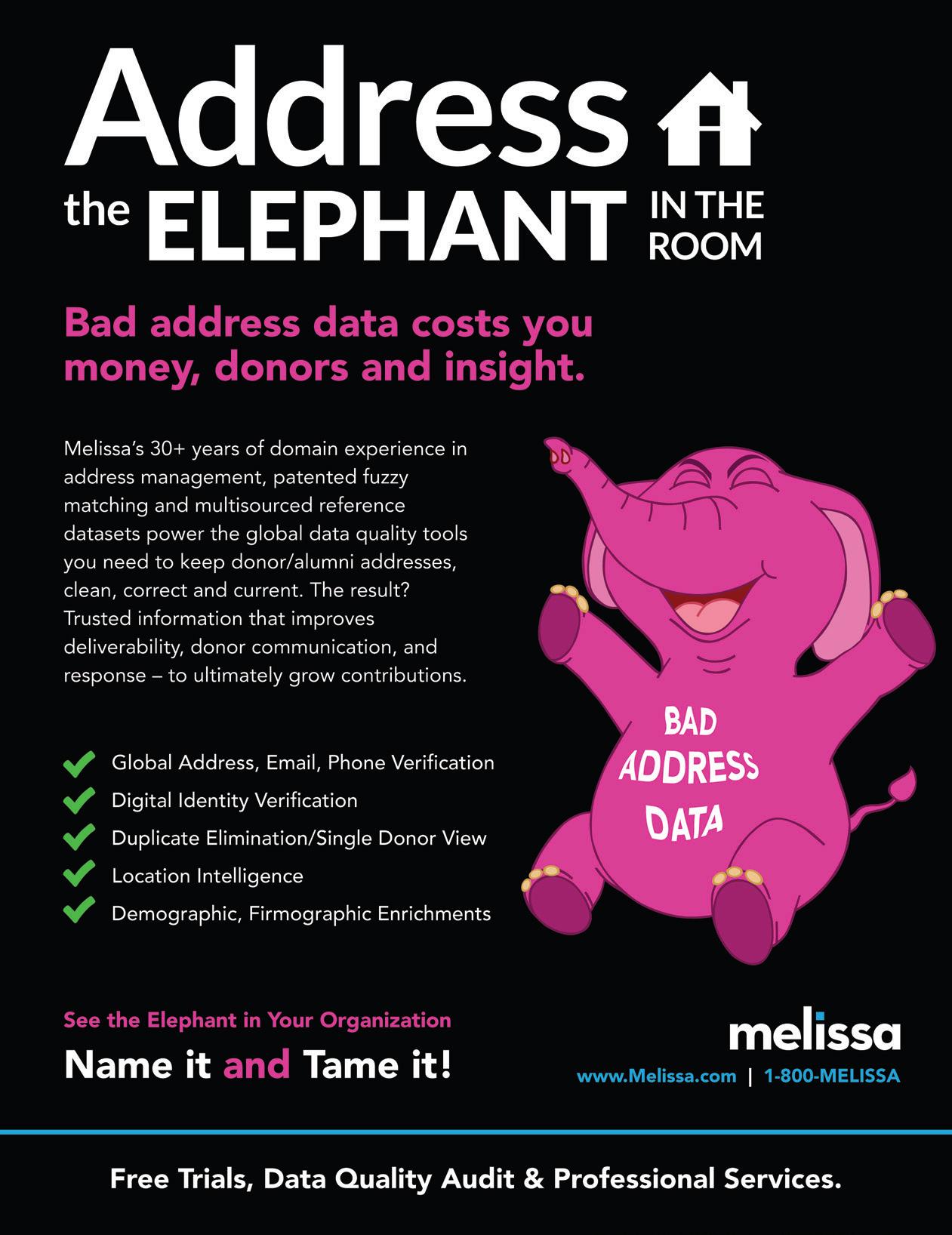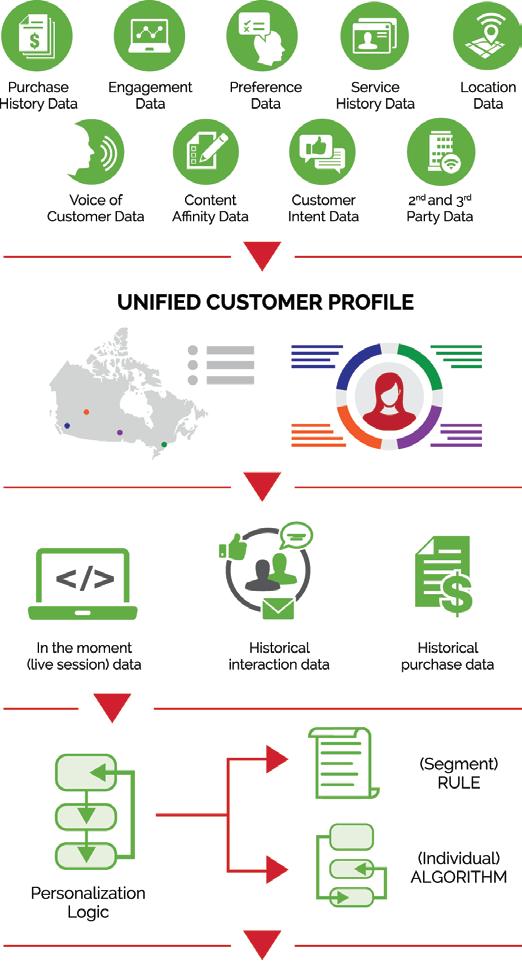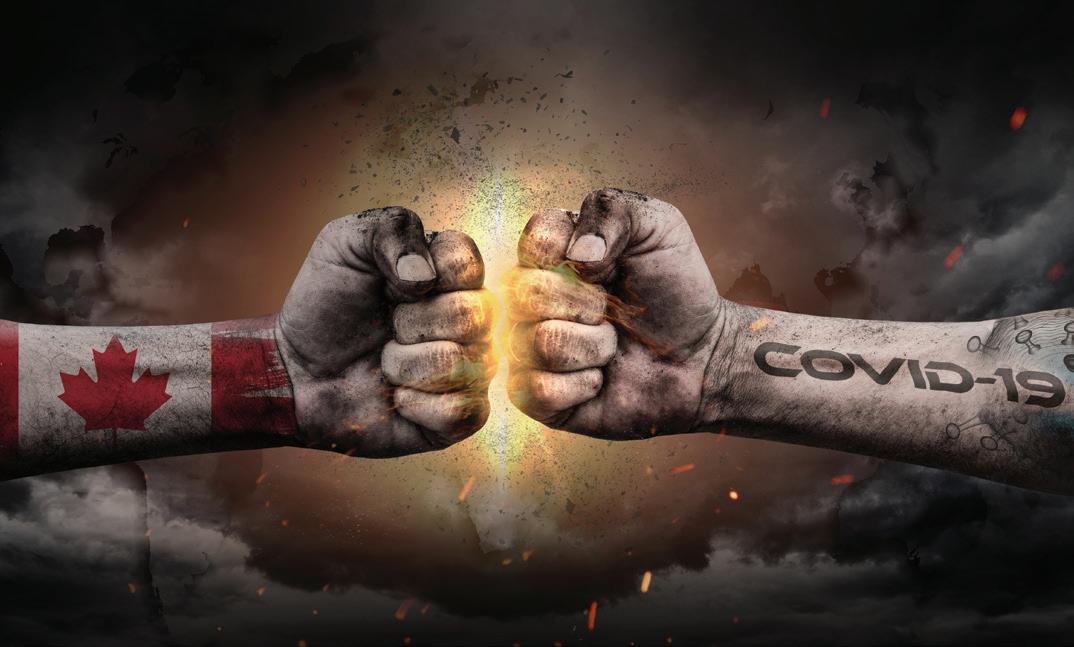MARKETING
Will Fundraisers Finally Give Up on Personalization?
M
BY STEPHEN SHAW
astering the practice of personalization can seem overwhelming for marketers, leaving them to wonder whether the cost and effort is worth the trouble. But giving up on the dream of one-to-one marketing would be a shame. When the era of Big Data dawned in the early 2000s with the explosive growth in web traffic, marketers swooned at the potential for personalized messaging: at long last, the dream of one-to-one marketing seemed within reach. Yet as the years rolled by personalization remained a buzzword: the practice never caught up with the rhetoric. In a McKinsey survey last year, just 15 percent of CMOs claimed they were “on the right track with personalization”, stymied by a chronic lack of resources. Meanwhile, customers have come to view personalization as promotional gimmickry, urging them to add one more item to their online shopping cart. In recent years, however, a new generation of AI-powered technologies has made it easier than ever for marketers to personalize the customer experience. Which is why in 2019 the Association of National Advertisers named personalization its “Marketing Word of the Year”. But then at the end of last year the research firm Gartner came out with the glum prediction that five years from now 80 percent of marketers will have abandoned their personalization efforts due to a lack of ROI or the “perils of customer data management”. Personalization is hard to get right — even with the latest technology. But the reasons go far beyond the technical complexities of mastering personalization. It has more to do with marketers treating personalization as an afterthought. Viewed as a basic customer expectation, personalization becomes too important for marketers to give up on. Being better Look over the shoulder of any digital native absorbed in their phone these days and it is easy to see why marketers are struggling to connect with them. Headphones on, eyes glued to their screen, they live in their own personal media bubble, frenetically scrolling, tapping, texting and swiping, messaging their friends, checking their newsfeeds, sharing their pictures, maybe even watching a video or playing a game. Jamming sponsored posts in between their social feeds or stuffing e-mail in-boxes with “best guess” offers or blitzing them with push notifications just forces them behind a privacy wall. The same is true of every other invasive tactic — web site foundationmag.ca
pop-ups, infobars, digital ads, video pre-rolls, the list goes on. So people have learned to screen out the street noise — skip and block ads — “cut the chord” — insulate themselves from blatant commercial pitches — and seek sanctuary on ad-free media platforms. As long as marketers persist in making campaigns the basis of their planning, their brand messaging will never be able to compete against the constant barrage of media distractions. Instead, they should find ways to be useful in the moment, whenever personalized assistance is needed, based on individual need and circumstances. And that means shifting the marketing mindset from “What can I sell you today?” to “How can I help you?”. As Seth Godin says, “Marketing is driven by better. Better service, better community, better outcomes”. Personalization should never be considered synonymous with targeting. It should not be limited to “you may also like” recommendations. Instead, it should be woven into the fabric of the total customer experience, helping to make it “better”. Better at delivering advice. Better at answering questions. Better at making the experience seamless across devices and touchpoints. Better at delivering timely service and support. Better at anticipating customer needs.
Personalization should never be considered synonymous with targeting Take the example of the calorie-counting mobile app LoseIt!. It stands out from the galaxy of weight watching brands by offering real-time analytical reporting such as pattern detection. For example, the app will figure out how specific food items influence the amount of weight gain or loss: “We’ve noticed that on days you incorporate muffins, you tend to keep your total calories lower”. The reason LoseIt has grown to 30 million members is its commitment to being “better”. Every new feature is born out of a singular crusade: to fight the obesity epidemic by making people more conscious of their food choices. The biggest barrier to personalization is that so few companies take a holistic view of the customer experience. Most are still organized around product and channel silos. And while customer journey design can make it easier for people June/July 2020
FOUNDATION Magazine
13








